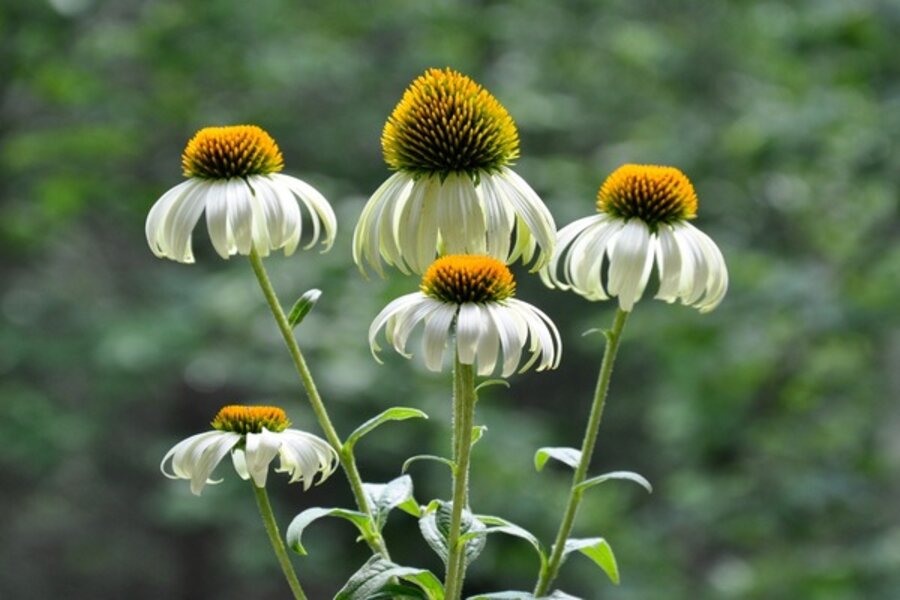New hybrid coneflowers: How reliable are they?
Loading...
When you specialize in one particular plant, it’s easy to fall into a gardening rut.
While living in Maryland, I focused on roses and companion plants that looked good with roses. I wasn’t very interested in experimenting with anything new.
Now that I’m starting over with a garden in the mountains of North Carolina, I see I’ve been missing out on some really interesting perennials. I inherited a few daylilies and am just beginning to appreciate their beauty and usefulness.
I was also intrigued when a coneflower popped up in an area where I’d sown wildflower seeds last summer. It was just an old fashioned Echinacea purpurea, but it looked quite elegant amid a group of oxeye daisies.
I wondered why I hadn’t noticed this appealing flower before.
The humble Echinacea has some fancy new cousins
Hardy, attractive and easy to grow, these popular American wildflowers have long been a staple of the perennial border both here and in Europe.
Beginning in the mid-1990s, a number of enterprising plant breeders began making crosses between several varieties of native coneflowers in an attempt to make a good thing even better.
The result is a dizzying array of new hybrids in a rainbow of delicious colors, along with a wide choice of flower forms (including pom-poms and doubles) and sizes from midget to statuesque.
Keeping up with all these new and unusual coneflowers is about as difficult as figuring out which of a multitude of rose introductions to try. The number of choices and names boggle the mind.
Should I get a Milkshake and Tomato Soup? Or a Marmalade and Merlot?
And once I decide on which of the new beauties to try, should I assume it will be as easy-care as the old standby?
The coneflower controversy
The traditional purple coneflower has been a Top 10 perennial for decades. It self-seeds so even when the original plant is just a memory, true seedlings will have taken its place.
Unfortunately, many of the new introductions don’t perform as dependably in the garden.
Many seem to disappear after a year or so, and others never bloom. Some fade quickly in the heat. A number of varieties don’t set seed and others produce strange seedlings.
It’s a disappointing result after a great deal of hype and high expectations.
Anecdotal evidence also suggests that the success rate for certain new coneflowers may depend on the region where they are grown.
Jeff Dinslage of Nature Hills Nursery reports that Tomato Soup has been a star in his Nebraska yard for several years despite being placed in the worst spot in the garden. Kim’s Knee High is another variety that does well in the heartland.
Fatal Attraction and Fragrant Angel don’t mind the heat and clay soils of the mid-Atlantic according to a three-year study done by the nonprofit Mount Cuba Center in northern Delaware.
And compact Elton Knight has done well enough in Britain to be given the Award of Garden Merit by the Royal Horticultural Society.
I don’t know if my White Swan [see photo above] and Ruby Star will be winners here in the North Carolina mountains, but I will certainly report if either one rates a thumbs-up.
I hope the rest of the Diggin’ It bloggers (and readers) will chime in with Echinacea experiences from their areas of the country.
The explosion of these unique and enticing plants is exciting news for gardeners. But before we all go coneflower crazy, we need to separate the dazzlers from the duds.
PSSST: No matter which coneflower you try or where you live, good drainage is essential. Most of the newer varieties simply won’t tolerate wet feet and will rot in heavy clay soil.
-----
Lynn Hunt, the Rose Whisperer, blogs regularly at Diggin' It. She's an accredited horticultural judge and a Consulting Rosarian Emeritus for the American Rose Society. She has won dozens of awards for her writing in newspapers, magazines, and television. She grows roses and other plants in her garden in the mountains of western North Carolina. To read more by Lynn, click here.You can also follow her on Twitter.





